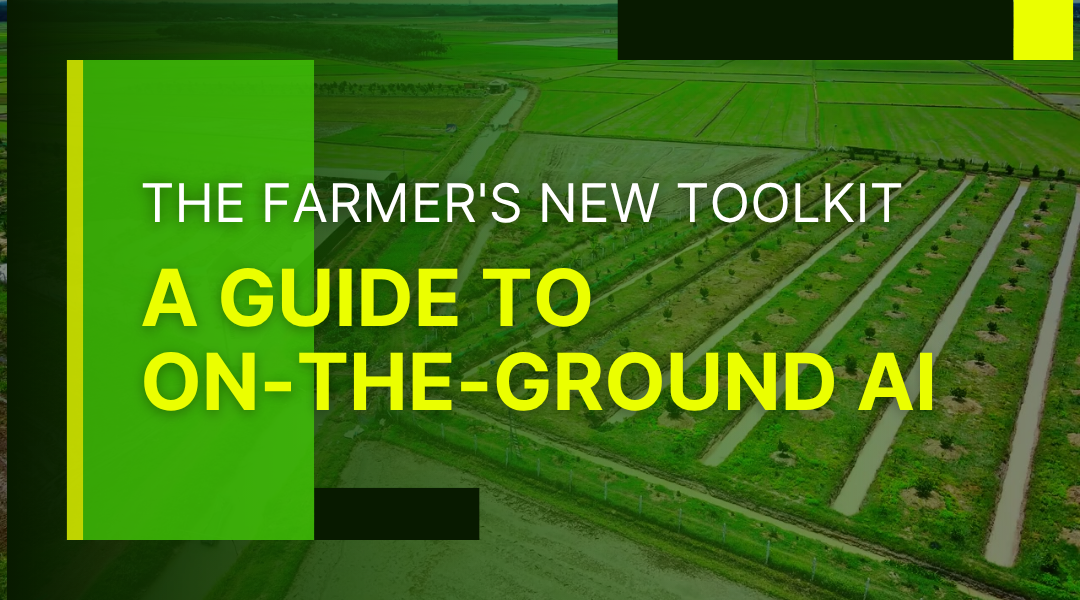Walk into a farm’s operations shed today, and you might be surprised. Next to the well-worn work gloves and grease-streaked manuals, you’ll find tablets displaying live drone feeds and monitors tracking soil sensor data. This new digital toolkit, powered by a suite of intelligent technologies, is giving farmers superhuman senses. Let’s break down these tools not by their technical jargon, but by the very human problems they solve in the field.
The Field’s Sixth Sense: Pattern Recognition
At its core, the most valuable AI tech for farming is a master of pattern recognition. It’s not about programming a computer with rules, but about showing it thousands of examples until it learns for itself. Think of it as training a highly observant apprentice who never sleeps.
- In Practice: You feed a system thousands of images of walnut leaves—some healthy, some afflicted with blight, others suffering from drought stress. Over time, the system learns to spot the subtlest yellowing at the leaf margins or a slight curl in the canopy that signals trouble long before your own eye can see it. It’s the difference between noticing a single sick plant and predicting a problem across the entire orchard.
Eyes in the Sky: Aerial Imaging & Analysis
Drones and satellites have given farmers a bird’s-eye view for years, but now they’re doing more than just taking pictures. They’re analyzing them.
- Beyond Basic Photography: Modern drones carry multispectral sensors that see light wavelengths beyond human vision. They don’t just see “green”; they see a specific shade of near-infrared that indicates photosynthetic activity. A patch of corn that looks fine to you might appear in a data map as a faint red spot, indicating it’s stressed and struggling to convert sunlight into energy, prompting you to investigate a potential drainage issue or nutrient lockout in that specific zone.
The Hands-Free Workforce: Smart Machinery
This is where intelligence meets the physical world. Autonomous machinery is taking over repetitive, precise, and labor-intensive tasks.
- A New Breed of Tractor: Imagine a tractor that navigates a vineyard row at night, using a combination of GPS and real-time camera vision to stay perfectly centered. It’s not just driving; it’s analyzing each vine as it passes, adjusting its pruning attachments on the fly to suit the growth pattern of each plant.
- The Precision Weeder: For high-value crops like lettuce or baby spinach, weeding by hand is prohibitively expensive. Now, small, autonomous robots roam the fields. Using real-time camera vision, they distinguish a fragile spinach seedling from a common purslane weed. In a fraction of a second, they can dispatch the weed with a precise micro-spray of organic herbicide or even a miniature laser blast, leaving the crop untouched and eliminating the need for broad-spectrum chemicals.
The Conversational Computer: Making Sense of Data
One of the most underrated tools is the ability for machines to understand and process human language and unstructured data.
- Your Agri-Assistant: Instead of spending hours searching through decades of university extension reports and weather data, a farmer can ask a natural language system a direct question: “What was the soil temperature trend in this county for the last two weeks, and what’s the recommended planting depth for my sorghum hybrid given that data?” The system combs through millions of data points and documents to provide a synthesized, plain-English answer, saving invaluable time and leveraging collective knowledge instantly.
The Nervous System of the Farm: Sensors & IoT
The true magic happens when these technologies are woven together by a network of physical sensors—the farm’s central nervous system.
- A Living, Breathing Map: Moisture sensors buried at different root depths send constant updates. Weather stations track hyper-local rainfall and wind. This data doesn’t exist in a vacuum. It’s layered with the drone imagery and pattern recognition models to create a living, breathing map of the entire operation. You don’t just see that the soil is dry; you understand why it’s dry in one spot and not another, and you can dispatch a targeted irrigation command only to the areas that need it.
Conclusion: The Symphony of Smart Farming
Individually, these tools are impressive. But their real power is revealed in concert. It’s the seamless handoff from a drone that identifies a pest hotspot, to a smart sprayer that applies a targeted organic pesticide only to that specific area, all while the farm’s central data hub logs the event and predicts the treatment’s effectiveness based on historical outcomes.
This isn’t about creating a fully automated, people-less farm. It’s about augmenting the farmer’s deep-seated intuition with a flood of precise, actionable data. It transforms decision-making from a best guess based on past experience into a confident choice backed by real-time, field-wide intelligence. The new agricultural toolkit doesn’t replace the farmer; it makes them more powerful, more efficient, and better stewards of their land than ever before.
